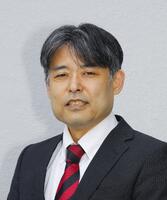Research Experience
-
2022.09-Now
Waseda University Department of Health Science and Welfare, Faculty of Human Sciences Chair
-
2015.04-Now
Waseda University Department of Health Science and Welfare, Faculty of Human Sciences professor
-
2011.04-2015.03
Waseda University Department of Health Science and Welfare, Faculty of Human Sciences Associate Professor
-
2008.08-2011.03
National Hospital Organization Murayama Medical Center Biomedical Engineering Laboratory, Clinical Research Center Chief of Laboratory
-
2008.04-2008.07
Fujita Health University Faculty of Rehabilitation, School of Health Sciences Associate Professor
-
2007.04-2008.03
Fujita Health University Faculty of Rehabilitation, School of Health Sciences Associate Professor
-
2004.04-2007.03
Fujita Health University Faculty of Rehabilitation, School of Health Sciences Associate Professor
-
2002.04-2004.03
Keio University Deptartment of Biosciences and Informatics, Faculty of Science and Technology Assistant Professor
-
2001.04-2002.03
keio University Deptartment of Applied Physics and Physico-Informatics Faculty of Science and Technology Assistant Professor


Click to view the Scopus page. The data was downloaded from Scopus API in January 14, 2026, via http://api.elsevier.com and http://www.scopus.com .